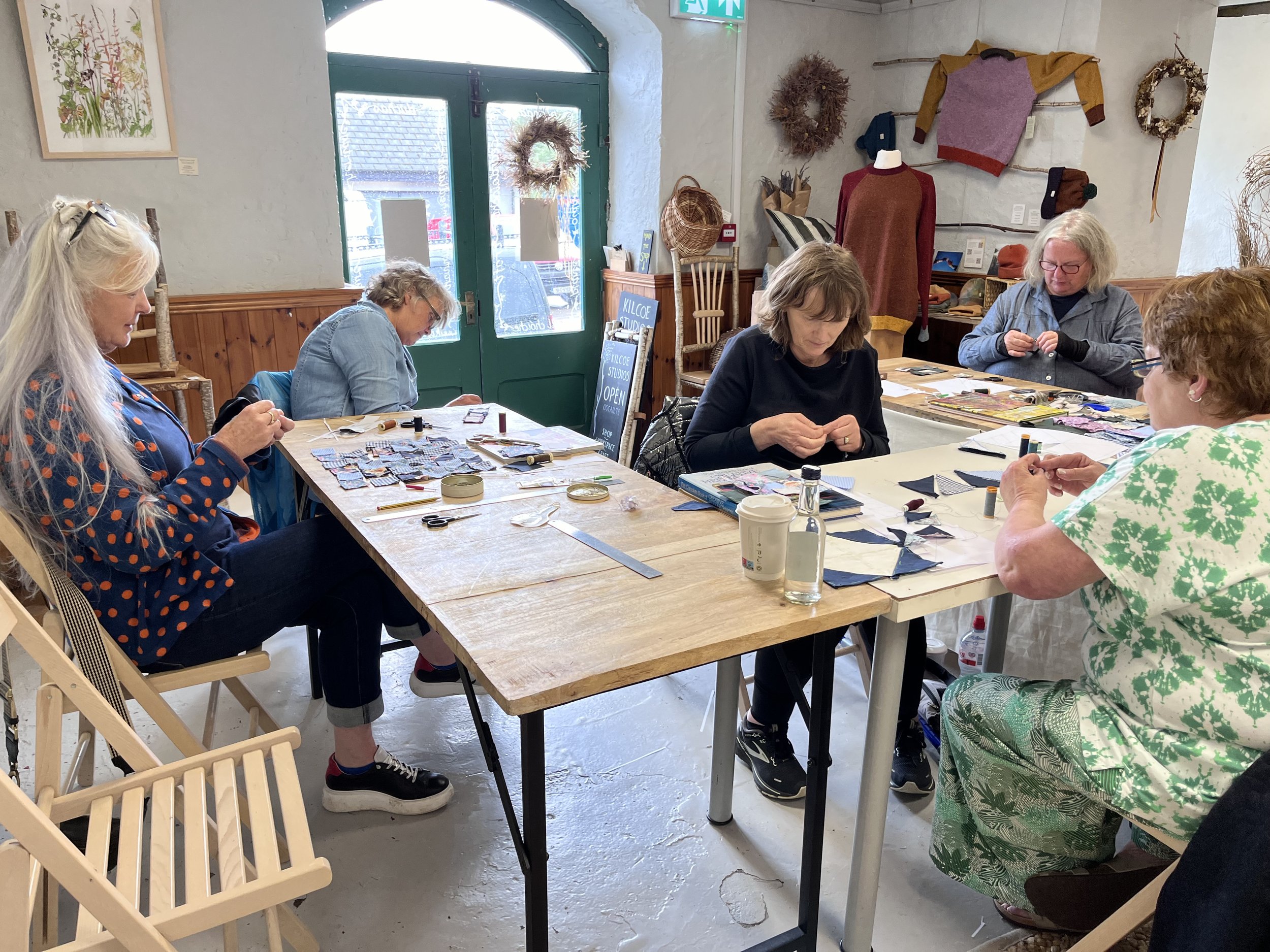Our Fabrics
Sustainability means being conscious of the composition of fabrics and knowing how and where is was made. Foremost, we want the fabrics to look beautiful and feel lovely when worn, but we also want to be satisfied that they were ethically produced. In addition, we're keen to use what already exists, by which we mean using vintage and deadstock fabrics and repurposing salvaged fabrics.
"There is no beauty in the finest cloth if it makes hunger and unhappiness"
- Mahatma Gandhi
Sustainable Fabric
Our starting point when selecting fabric is to use only fabrics made of natural fibres, such as linen, cotton, wool and silk. None of these fabrics are without their own ethical dilemmas, but they are at the very least biodegradable. Fabrics such as polyester, nylon and acrylic are made from man-made fibres which are derived from petroleum and take centuries to breakdown, leaching chemicals as they do so.
We believe natural fibre fabrics are more pleasant to wear and feel nicer against our skin and they often hang and drape better, too. However, there are ethical considerations on how these fabrics are produced, such as the depletion of land through over production and the impact on the environment from the use of fertilisers, pesticides, dyes and other chemical treatments. There are also serious concerns regarding the people who are employed to manufacture the textiles and whether they have fair working conditions and receive a living wage.
Aiming for transparency, we want to be clear about the history of fabric used for each garment, so this is detailed in each description. Whilst, the provenance of some fabrics may be uncertain, if it already exists we feel it is important to use it and give it purpose, so we'll use up what we have, be it deadstock, salvaged or vintage fabric, remnants and off-cuts alongside introducing more ethical fabrics like linen. As time goes on, we plan to make more and more garments in fabrics from known sustainable sources.
Linen
Linen has traditionally been considered a summer fabric due to it's breathability, but worn layered in the same way as cotton it is highly suitable to wear in all seasons. It is a hard working, extremely durable fabric if cared for correctly; perhaps starting off it can seem stiff, but the more it is worn and laundered, the softer it becomes. When ironed, linen is crisp and smooth, but it may also be left unpressed for a more casual, rumpled look. Seams and folds in the garment are best ironed on a medium to low heat as over ironing can cause fibres to become brittle over time, but this is the only area to be cautious about.
Linen has great environmental credentials as it's production requires very little irrigation and processing compared with other fabrics. The fibres used for linen fibres come from the inner stem of the flax plant which run up inside the bark of the plant from the roots up to the flower heads, making them long and therefore very strong. The parts of the flax plant not needed for linen are used in other ways; the seeds are use for animal feed and the bark for chipboard, so there is no wastage. Linen is an ancient fabric and we love making clothes from it, due to it's natural characteristics and it's relatively low impact on the environment.
Cotton
Conventionally produced cotton is grown using farming methods that rely on the use of pesticides and fertilizers and/or genetically modified seeds. Cotton is grown on 2.4% of the world’s agricultural land, yet it accounts for 10% of pesticide use and 25% of insecticide use globally. Often, workers handling the chemicals have not been properly trained or don't wear appropriate protective clothing, putting their heath at risk. In addition, the crop is farmed repeatedly on the same land, weakening it's biodiversity and requiring greater use of fertilizers and pesticides.
Organic cotton means that the cotton is grown without the use of harmful pesticides, using a crop rotation method, natural pest repellants and by removing insects and weeds by hand. Typically, organic farmers will have 4-5 acres and due to the absence of toxic chemicals, farmers are also able to keep animals and grow food. Their cost are lower and they are paid a premium for their crop. This method of farming means the land is not polluted and the fabric produced contains no pesticides. Land can be used year after year without depletion because low inputs are ecologically sustainable. The organic cotton we use is certified at source by GOTS (Global Organic Textile Standard) as being organic.











